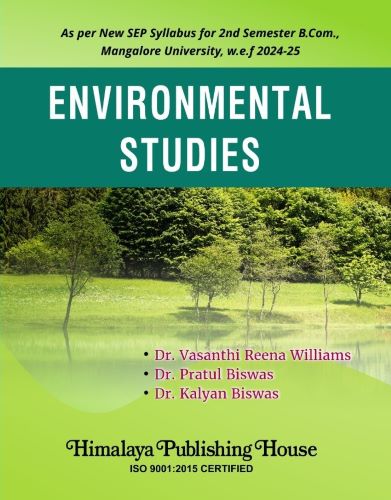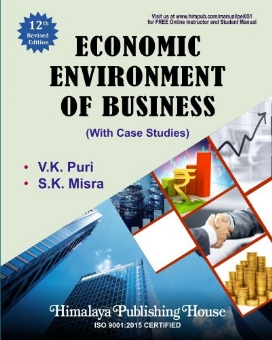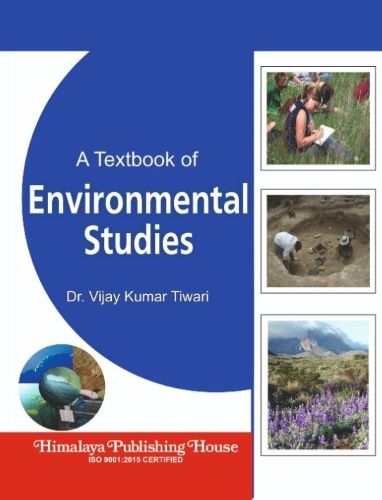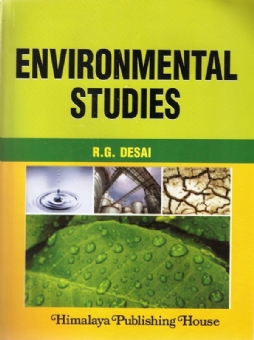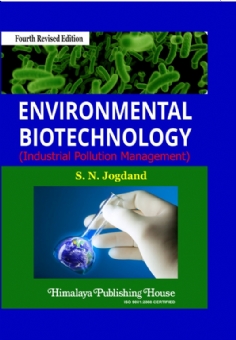We have great pleasure in presenting First edition “Environmental Studies” written for students of UG courses. The related matters are written in a simple and easily understandable.
This volume is an attempt to provide the students with thorough understanding of Environmental Studies. We have presented the subject matter in a systematic manner with liberal use of charts and diagrams where ever necessary so as to make it interesting and sustain students’ interest.
Contents –
Unit – 1 Environment and Biodiversity
Introduction
Environment
Definition of Environment
Ecosystem of Environment
Types of Environment
Terrestrial Ecosystem (Forest)
Aquatic Ecosystem (Pond)
Components of Ecosystem
Biotic and Abiotic
Food Chains
Food Webs
Energy Flow in an Ecosystem
Biodiversity
Definition of Biodiversity
Levels of Biological Diversity
Genetic Diversity
Species Diversity
Ecosystem Diversity
Importance of Biodiversity
Ecological of Biodiversity
Economic of Biodiversity
Biodiversity Hotspots
Definition of Biodiversity Hotspots
Biodiversity Hotspots of India
Endangered and Endemic Species of Western Ghats
IUCN Red List
Threats to Biodiversity
Habitat Loss
Poaching of Wildlife
Biological Invasions
Mining and Dam Construction
Conservation of Biodiversity
In-situ:
(National Parks, Wildlife Sanctuary, Biosphere Reserves,
Sacred Grooves)
Exsitu Conservation:
(Botanical Gardens, Zoological Garden, Seed Bank, Gene Bank)
Mangrove Ecosystem
Definition of Mangrove Ecosystem
Threats
Conservation
Review Questions
Unit – 2 Natural Resources and Environmental Pollution
Introduction
Natural Resources
Definition of Natural Resources
Types of Natural Resources
Renewable (Definition and examples)
Non-renewable (Definition and examples)
Forest Resources
Uses of Forest Resources
Over Exploitation
Deforestation
Timber Extraction
Mining
Afforestation
Reforestation
Water Resources
Uses of Water Resources
Over-utilization of Surface
Over-utilization of Ground Water
Conflicts Over Water
Rain-water Harvesting
Definition of Rain-water Harvesting
Types (Surface, Roof Top)
Significance of Rain-water Harvesting
Energy Resources
Conventional Sources (Oils, Coal, Natural Gas, Electricity)
Non-Conventional Sources (Solar, Wind, Tidal, Biofuel,
Nuclear Energy)
Environmental Pollution
Air Pollution
Water Pollution
Soil Pollution
Causes of Pollution
Effects of Pollution
Controls of Pollution
Plastic Pollution
Impact on Human Health and Animals
Review Questions
Unit – 3 Environmental Issues and Policies
Introduction
Environmental Problems
Climate Change
Global Warming
Ozone Layer Depletion
Acid Rain and Human
Wildlife Conflicts
Solid Waste Management
Types: (Domestic and Industrial)
Sources
Collection
Segregation
Transport
Process
Landfill
Incineration
Composting
Recycling
Environment Laws
Wildlife (Protection) Act-1972
Forest Conservation Act-1980
Biodiversity Act-2002
International Agreements
Montreal and Kyoto Protocols
Environmental Movements and Contribution
Chipko
Appiko
Bishnois of Rajasthan
Narmada Bachao
Salumarada Thimmakka
Environmental Protection
Public Awareness
Role of Individuals in Environment Conservation
4Rs’ (Reduce, Reuse, Recycle, Recover)
Important Days
World Environmental Day
World Wildlife Day
International Mother Earth Day
World Water Day
World Soil Day
Sustainable Development Goals
Review Questions

